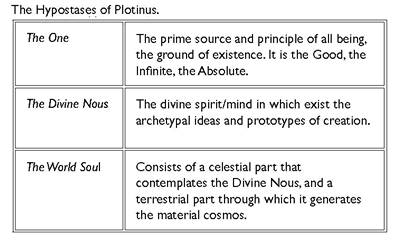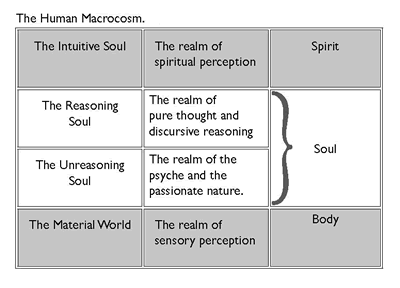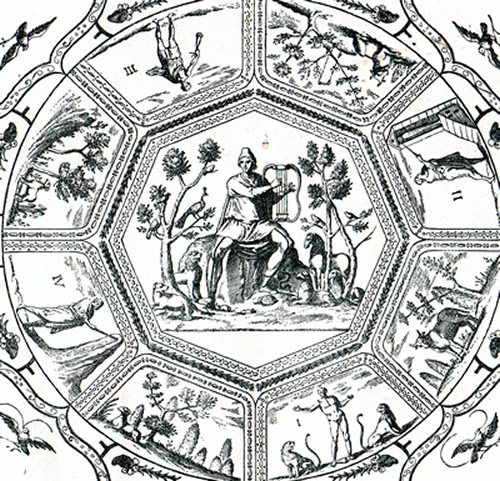Positive Health Online
Your Country

The Secret Garden: Secret Life of the Inner Soul
listed in meditation, originally published in issue 150 - August 2008
Throughout history, exponents of the spiritual life have likened the soul to a garden, a secret garden hidden deep within our being. Indeed, it is obvious in the surviving texts from the earliest times that the teachings of such people and the disciplines they employed, were directed towards enabling others to enter into that secret garden and engage with the inner reality of their own being. The Kabbalah is one such discipline, at the heart of which lies an ancient teaching concerning the soul’s emancipation from the world of the senses and its re-entry into the garden of the soul, otherwise known as paradise.

The Meaning of Soul
Most of us have a clear idea of what a garden is, but what do we understand by the word ‘soul’? Many authors, both ancient and modern, have discussed the activities, life-cycle and psychology of the soul, almost to the point of exhaustion, but few have really explained what they actually mean by the word. Some have referred to the soul in terms of it being an entity – that such and such a person is a young or old soul; others have discussed it in terms of it being a vehicle – my soul is filled with joy or love, or perhaps bitterness, but still the question remains, what is it? Whether this question can ever be fully answered is a matter for debate, but the general consensus today accepts the soul as being the ‘life-principle’ by which we think, will, know and feel.
Some believe this principle is of an entirely non-material and spiritual nature, whilst others think it a material substance, a by-product of the chemistry of matter. Some attribute it to immortality; others believe it to be no more than mortal. Some think it a simple undifferentiated creature incapable of division, whilst others see it as a creature of many parts. For example, the ancient Egyptians believed that a person possessed a physical body (Khat), and an immaterial double of the body known as the Ka. Furthermore, the Ka was also associated with the Ba, which was understood to reside within the heart. The Ka and the Ba were thought to dwell in the tomb with the body, and were able to wander away from the body; however, their continued existence depended upon offerings being made by family and friends of the deceased, and which came to an end when such offerings ceased. The permanent life-giving principle was the Khu, a term that means something like ‘spirit-soul’, whose nature was understood to be unchangeable, incorruptible and immortal.
In Hinduism a word often used to describe the soul is ‘Atman', which means breath or wind. The atman is regarded as a fragment or particle of the Divine, and as such is understood to have divine attributes. Thus it is eternal, without magnitude and indestructible, similar in concept to the ‘life-principle’ described above. To the people of ancient Greece the soul had several names, but the most common was Psyche which, besides meaning breath, life and spirit, also means butterfly or moth, a motif frequently used in ancient Greece as a metaphor for the immortal soul. In the late Hellenic world it was believed that the soul descended to earth from the heights of heaven, and that as it descended it was first clothed in an ethereal garment of non-material purity. As it continued its descent through the planetary spheres, it received first a solar garment then a lunar garment. Finally, it was born into a physical body.
The Stages of the Soul
Among Christians the popular view today is that a human being consists of an immortal soul within a mortal body; not so different from the Late Greek really. Many theologians maintain that a fully developed soul is infused into the embryo at conception. However, opinions concerning this have varied over the centuries. Medieval philosophers, as exemplified by Thomas Aquinas in the 13th century, understood the soul to be composed of a spiritual substance, and that it incarnates in three progressive stages of development, vegetative, sensitive and rational. The first, the vegetative stage, corresponds with conception and the earliest development of the embryo; the second, the sensitive stage, emerges as the embryo develops; and the third, the rational stage, manifests as the embryo reaches maturity in the womb and completes the process of incarnation.
These stages are consistent with Aquinas’ assertion that three things are to be found in spiritual substances, Essence, Power and Operation. A notion comparable with the Hypostases of Neoplatonic thought; Essence corresponding with the One, Power with Nous and Operation with the World Soul. Indeed, the influence of Neo-Platonism is widespread in the doctrines of medieval Kabbalah, and may also be found in the teachings of many esoteric Christian circles. The roots of this doctrine can be traced back to Plato, who maintained that all souls existed before incarnating in a body, and that they exist for all eternity, an idea clearly expressed in Kabbalistic thought, which maintains that all souls were formed before the world, hidden in the Divine. As the process of creation began they were brought forth and stored in a great Treasure-house of souls, from whence they progressed into this world.


Mind of the Soul
It could easily be argued that the mind is the secret garden of the soul, an internal and private world wherein our imagination reigns supreme. Such a view would not be wrong, but to call the mind a garden may be a step too far; an uncontrolled wilderness perhaps, but not a garden. Indeed, the fundamental distinction between a wilderness and a garden is that a wilderness is an unknown, unpredictable and potentially dangerous environment, whereas a garden is a safe, known and predictable environment that has been designed with a specific purpose in mind, be it for pleasure, for produce or indeed for both. For a garden to be successful it should not only have good seed planted in it, but it must also be cared for and nurtured. Allegorically speaking, the faculties of the mind are the seedlings and flowers, shrubs and trees that must be cultivated and tended, so that the wilderness of the mind may be turned into a beautiful garden we can enjoy in peace and tranquility, rather than enter in fear and trepidation.
In medieval Europe, the most important faculties of the soul were thought to be Intellect, Memory and Will, to which the powers of Reasoning, Imagination and Desire were subservient. However, without an appropriate education, such powers were perceived to be invariably engaged in the work of fulfilling carnal needs. Consequently, a great deal of effort was invested in the education and development of these faculties and powers to emancipate them from the mindless passions of our carnal nature.
The Human Spiritual Nature
I was taught that although we are spiritual beings we are nevertheless born in the world and of the world; and that our nature, instincts, appetites and faculties correspond with our level of cultural evolution and personal development, and as such we are absolutely in harmony with natural law. Consequently, when we act in accord with our nature we are true to ourselves. However, the spiritual imperative to ‘become’ requires of us that we develop and refine our nature, unfolding the spiritual potential that lies within us. Porphyry, a Neoplatonic philosopher of the late third century, has a great deal to say about this in his treatise, The Principles of the Theory of the Intelligible, in which he discusses the development of virtue as the foundation of self-knowledge, demonstrating that it is only through this refining process that the soul can transcend the mundane world. Accordingly, virtue may be understood as something more than moral correctness, it may be seen as a perceptible manifestation of the spiritual nature unfolding within us.
Kabbalistic Theory
Ignoring the materialistic assertions of ‘pop’ Kabbalah, it is obvious that a great deal of traditional Kabbalistic doctrine is concerned with educating the soul in the ways of the interior life. One of the most famous of all Kabbalists, Moses de Leon, who lived during the late 13th century, taught that the word Pardes, which means Garden or ‘paradise’, is a cipher concealing an esoteric understanding of existence. Each consonant of the word PaRDeS denoting one of four levels of interpretation and meaning; thus: P stands for the literal meaning; R stands for the allegorical meaning, particularly in the moral sense; D stands for the metaphorical meaning, particularly in the symbolic sense, and S stands for the mystical meaning. In this simple instruction Moses de Leon informs us that within the garden of the soul all experiences are significant, and may be interpreted on four different levels. The first is the world of the senses, the material world. The second is the psychic world, an astral realm of ever-shifting images and sensations. The third is a world of pure thought, devoid of images and the last is a world of pure archetypal being. Paradoxically, all are part of one thing, co-existing within the same point of unity yet may be comprehended individually and independently.
Soul’s Journey Within
One of the greatest literary works concerning this subject is Dante’s Divine Comedy. Written in the early years of the 14th century, it describes the soul’s passage out of the dark realms of ignorance into the clear light of spiritual enlightenment. The story, which gives an account of a soul’s ascent out of the depths of hell up to the spiritual heights of heaven, reflects the world he lived in – a medieval Christian world, yet it is a story that is capable of translation into any era or culture. It is essentially an allegorical narrative of an interior journey into the depths of one’s being that has from the first been the subject matter of deep and prolonged meditation – a discipline highly valued by spiritual teachers past and present. In traditional terms, meditation is a discipline of mind control that enables the soul to withdraw from the world of the senses into the interior realms. To be effective it requires the development of two basic skills: to be still and to concentrate the mind. To be still means to be able to relax very deeply for an extended period of time; it’s not so difficult. On the other hand, to concentrate the mind is a little harder, although not as difficult as you might think; it merely requires a desire to engage with the interior world that is greater than the desire to engage with the world of the senses. It is an imperative that cannot be avoided, but if the desire to engage with the interior world is sufficiently strong, then the skills of concentration come readily enough. Generally, Meditation was never a discipline undertaken outside of the parameters of a spiritual curriculum.
In ancient India, Patanjali, the great spiritual reformer, taught yoga as a means of discriminating between the subject – the purusa (self or spirit) and the object – prakriti (Nature); to which the discipline of meditation is central. In Christian terms, although meditation plays an important role, the work also involves a systemic programme of spiritual endeavour that begins with an unquenchable desire for spiritual knowledge. It is a desire that is gradually realized through the application of specific ascetic disciplines, such as the purification of the instinctive nature through the education of the senses, appetites and desires – a time consuming work. Another very important discipline is the control of the tongue, learning not to speak unless absolutely necessary, and developing the ability to enquire and listen without interruption – a tricky undertaking closely allied to another discipline, the examination of conscience, which is perhaps the beginning of meditation in earnest. In any culture, meditation was traditionally a process of internal reasoning based upon spiritual verities, leading eventually to a higher state of consciousness symbolized by the Secret Garden of the Soul, wherein the soul may become aware of the presence of the divine. In that Presence the mysteries of life are revealed.
.gif)
Spiritual Disciplines
A spiritual discipline, designed to assist the soul in this purpose, and which was known and employed by exponents of the spiritual life in the classical world, consisted of the slow repetitive reading of a passage of scripture until it is known by heart, followed by meditating on its significance. It was known as the ‘Way’ or the ‘ladder’. This contemplative way of life, fostered from the earliest days of the Church, found in the turbulent years of the third century a relatively peaceful and fertile soil in the desert lands of the Levant (Egypt, Syria and Palestine). The inhospitable nature of the desert provided the ideal environment for Christian ascetics seeking to live the spiritual life. Over the course of time, some of these ascetics formed the loose-knit communities that were to evolve into institutional monasteries, which flowered during the fourth century and spread rapidly throughout the Roman world, deeply influencing and shaping the spiritual life of both East and Western Christianity.
The spiritual path of these desert mystics was unquestionably ascetic, and through their influence asceticism became a fundamental part of the monastic life. The word asceticism is derived from the Greek (exercise, or training), and was originally used by Stoic philosophers to denote a system of athletic practices aimed at combating vice and developing virtue. Asceticism also involved the use of psycho-spiritual processes to separate the soul from the body and its negative influence; but, among Christian mystics, the ascetic process was directed not towards purification by separation, but rather towards purification through unification – the unification of the body, soul and spirit in Christ. For the desert contemplative this ascesis was a means of training the whole person in a spiritual discipline, central to which was the discipline of the Ladder. In the sixth century it was enshrined in the Rule of St Benedict and became known as Lectio Divina, or ‘divine reading’; it was to become one of the most distinctive features of monastic life. Lectio Divina is embodied in the works of Philo of Alexandria (20BC-50AD) and is clearly expressed in the work of the Pseudo-Dionysius (c.500AD), particularly in his book On the Divine Names. In the 12th century Guigo II, the ninth prior of the Grande Chartreuse, wrote an important letter on the subject entitled ‘The Ladder of Monks’. As a method it has been employed in many different forms by esoteric communities in the western world ever since.
Traditionally, in a sacred space, the reading, or Lectio, is read aloud with the emphasis being upon the act of listening; it is repeated time after time until the passage becomes known ‘off by heart’. If the sacred text is to be read by another person it is important for those listening to repeat the words with their lips, under their breath as it were. This listening is no mere act of hearing; rather it is an act of attending with the whole of one’s mind, engaging as much of one’s being in the reading as possible, hopefully cultivating the ability to perceive something of the soul of the text. After a while, perhaps somewhere between 15-30 minutes, the reading ceases, and the attention is given over to a process of internal reasoning, thinking and reflecting upon the words of the reading. This internal reasoning is called Meditatio or meditation. The response to the Meditatio varies; sometimes it takes the form of spontaneous extemporary prayer, of chanting or singing religious songs. This is known as Oratio. At other times Oratio takes the form of inspired writings that are in some way related to the Lectio and Meditatio. Of those who persevere with this discipline, many have found that the Oratio subsides into a quiet state of rest in what has been described as the ‘Presence’ of God, and was traditionally called Contemplatio or contemplation. It is this state that the soul discovers and enters the secret garden of the soul, wherein may be found the Universal Tree of Life.

Logos figure portrayed as Orpheus or Christ in mythical garden
Some have speculated that the Tree of Life is the mind itself, others that the Tree exists within the mind. However, ancient mythologies generally place this Tree of Life in the centre of the garden; the Garden of the Hesperides for example, wherein grew the sacred apple trees whose golden fruit bestowed immortality. In the ancient world the Tree of Life was understood to be the central axis of the cosmos, sustaining all of creation – a symbol of universal life and immortality. In Kabbalistic terms the Tree of Life presents to the observer a metaphysical model of the cosmos, and of the soul, which is understood to be a microcosmic reflection of the cosmos; as such the Tree is also a representation of the ladder. It represents both the map and the territory. The Tree of Life is a diagrammatic expression of the Tree of the Soul; it may also be viewed as a map of the interior world or garden of the soul. It is a matter of perspective, a perspective that enables the Kabbalist to meditate in a constructive and meaningful way upon the universal principles and spiritual dynamics embodied therein, whilst allowing the Kabbalist to identify with the tree whose roots are deep in the diversified earth of coarse sensation, and whose trunk rises through the spheres of human experience, and whose canopy is high in the sublime atmosphere of the presence of the Divine.
Comments:
-
No Article Comments available